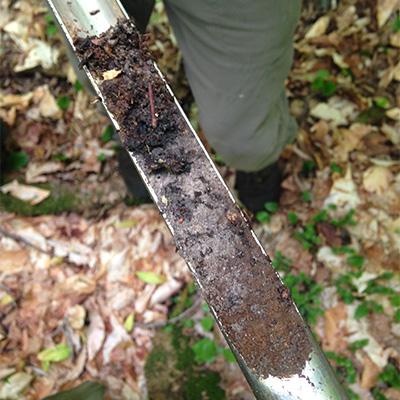Dynamics of Carbon and Nitrogen Stabilization in Mineral Soil Layers of Forests Regrowing After Harvest

Soil organic matter (SOM) stores the largest amounts of carbon and nitrogen in the Northern Forest. Stabilization of SOM helps to mitigate climate change through carbon sequestration and protect downstream surface water quality by controlling nitrogen concentrations. Storage of carbon and nitrogen in SOM over the long-term is poorly understood, but SOM stabilization is likely to vary with forest age due to differing nitrogen demands and carbon inputs during forest regrowth after harvest.
NSRC researchers used stable isotopes to trace carbon and nitrogen from plant material (sugar maple leaf litter) and simulated soil water into stable SOM associated with clay mineral particles in soils from White Mountain region (New Hampshire) forests of four age classes (~20 years to old growth). They used nanoscale isotopic imaging analysis to identify where on soil particles new SOM formed and with what soil minerals it was associated.
The researchers found that forest soils can rapidly store carbon and nitrogen inputs in stable mineral-associated SOM in forest age classes from two decades post-harvest to old growth. Old-growth stands had the lowest ability to store nitrogen. The researchers will incorporate results into development of the Spe-CN forest ecosystem model of carbon and nitrogen cycling. Findings inform land managers interested in predicting forest carbon sequestration or nitrogen retention under different future scenarios of changes in climate, tree species composition, or nitrogen deposition from air pollution. Better understanding of SOM stabilization and its controls in forests of different age is increasingly important for future projections of forest health and management decisions.
